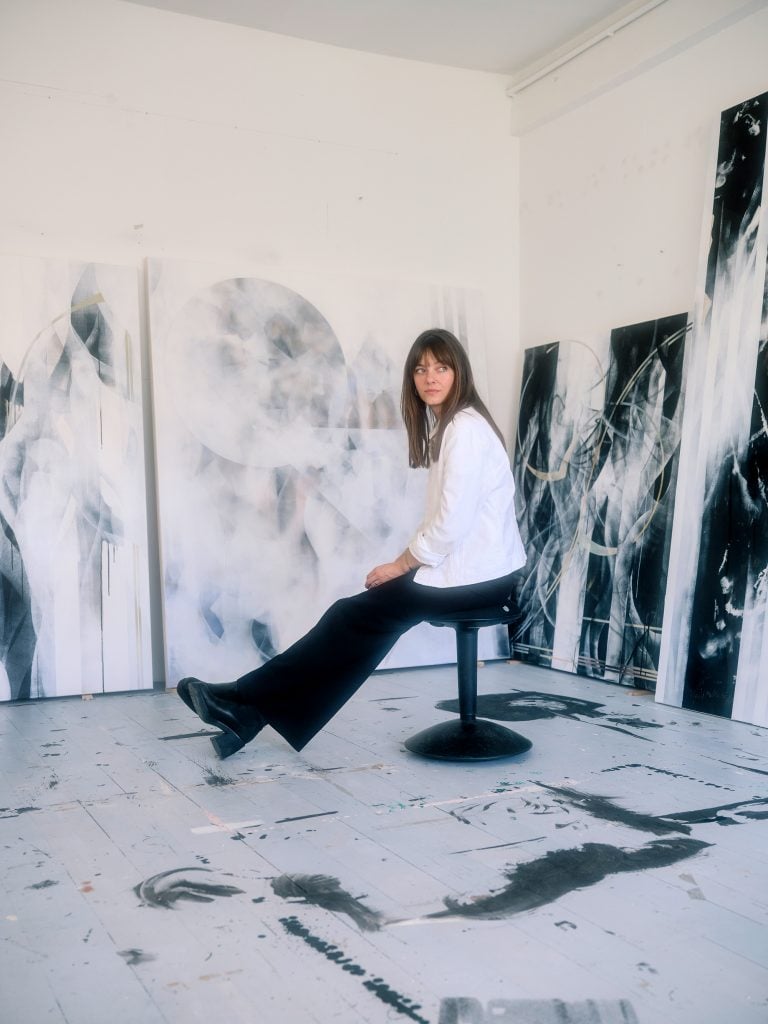
23 Dec Ruscha Voormann on Her Journey Through Abstraction
Source Credit: Content and images from Artnet News. Read the original article - https://news.artnet.com/art-world/ruscha-voormann-2591773
What drives an artist to evolve, adapt, and find their voice in abstraction? For artist Ruscha Voormann, her journey has been shaped by profound mentorship, an enduring fascination with human movement, and the challenges of today’s socio-political landscape.
Known for her large-scale, abstract picture compositions made using layers of acrylic, Voormann was awarded Germany’s CEU Prize for women artists earlier this fall, an award that promotes young female artists up to the age of 40 and helps make them more visible in a male-dominated art world. Jury members are Dirk Boll (chairman Christie’s EMEA), Mon Muellerschön (art advisor to Hubert Burda), Petra Winter (owner, Madame Magazine), Julia von Jenisch (head of the board, Deichtorhallen), as well as Kristina Tröger (Founder CEU (Clubs Europäischer Unternehmerinnen)).
Boll noted that the CEU prize “is a sign of appreciation and recognition for the important role that female artists play in the art world… [W]e want to pay respect to women artists and support them in further developing their talent, raising their voices in our society and telling their stories.”
We caught up with Voormann to learn more about her artistic process and what she has in store for 2025.

Ruscha Voormann © Sandra Singh
How did the artist and your mentor Gregor Hildebrandt influence your oeuvre?
When I think about it, I am amazed at how many similarities there were even before I got to know Gregor Hildebrandt and his work. For example, for several years now I have been working with a process in which I move two plexiglas plates with acrylic paint in between and then separate them from each other to create abstract pictures. This technique always creates “sibling pairs,” similar to Gregor’s “rip-off paintings.” In addition, we both seem to like to move predominantly in the black-and-white spectrum.
In the almost six years that I have known him, there have of course also been moments when he or his work has influenced me. An example from spring 2022 comes to mind when there was a shortage of manpower for the setup of his “Arrivederci Show” at the Klüser II gallery in Munich and I stepped in to help him. The two days of intensive engagement and closeness with the works from the show influenced me in such a way that as soon as I was back in my studio and was struggling to create a painting after a long, multi-layered transparent application of paint, I got a mood like the one I felt when I was close to the work “Arrivederci”—though the technical process is very different. It happened unconsciously at first, but when I saw the result in front of me, it was clear to me that a connection had been made. Perhaps it was a missing link or a mood that I had been looking for up to that point.
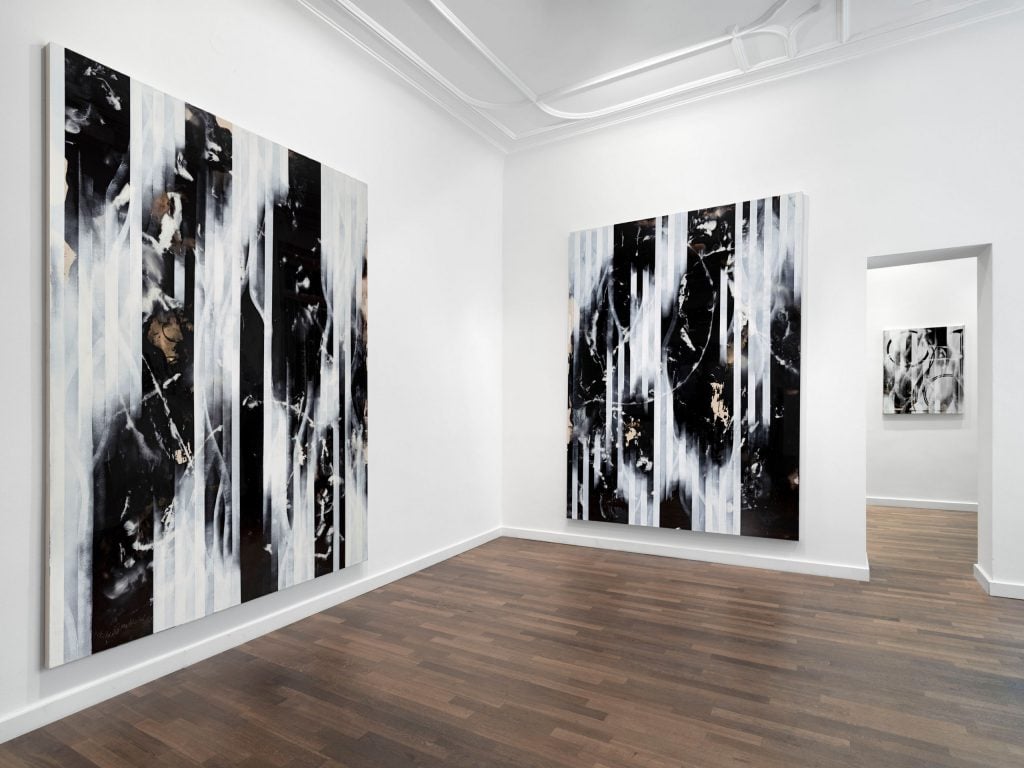
Galerie Crone “Polar” Installation view. Uwe Walter
Which artists have inspired you? Has this changed or evolved with age?
I would call it less inspiration and more an initial spark. More of a momentum that starts up your own inner, sense-driven engine and catapults ideas into your head based on what you have developed yourself so far. In the process, the sparking work of art is let go again and you can develop freely in your own work. This has happened to me many times. First, when I was still working figuratively, Edgar Degas and Henri de Toulouse-Lautrec gave me the initial spark to include the subject of dance, light, and movement in my work. My engagement with Yoko Ono gave me the initial spark to illuminate content. Lee Krasner gave me the initial spark to manifest movement through my own gestures rather than with other figures. Avery Singer gave me the initial spark to draw on my know-how with digital media and computer programs. The Cubists gave me the initial spark to develop a balance of hardness and softness. They are initial sparks, but they always caught and carried by their own artistic vocabulary.
With age and especially through my encounters with other artists, I realized that every artistic act is human and understandable and that behind every work of art lies the life of the artist and his environment. What drives an artist is something very normal. That may sound a bit dry, but it is precisely in this normal “human being” that the greatest magic lies. I now find a lot of inspiration in the way other artists live and their way of encountering and dealing with life. Inspiration now happens more from person to person, rather than from artwork to artwork.
After exploring other formats, you have now found your style in abstraction. What drew you to this?
Dance as a form of human expression has always interested and fascinated me. At first, it was captured in figurative painting. Then I realized that the expression of movement is much purer when it comes from myself than the representation of another person moving. I also appreciate that abstraction does not require any knowledge of symbols or language and involves an openness to the viewer that can function globally. Entering the world of abstraction has broadened my horizons.
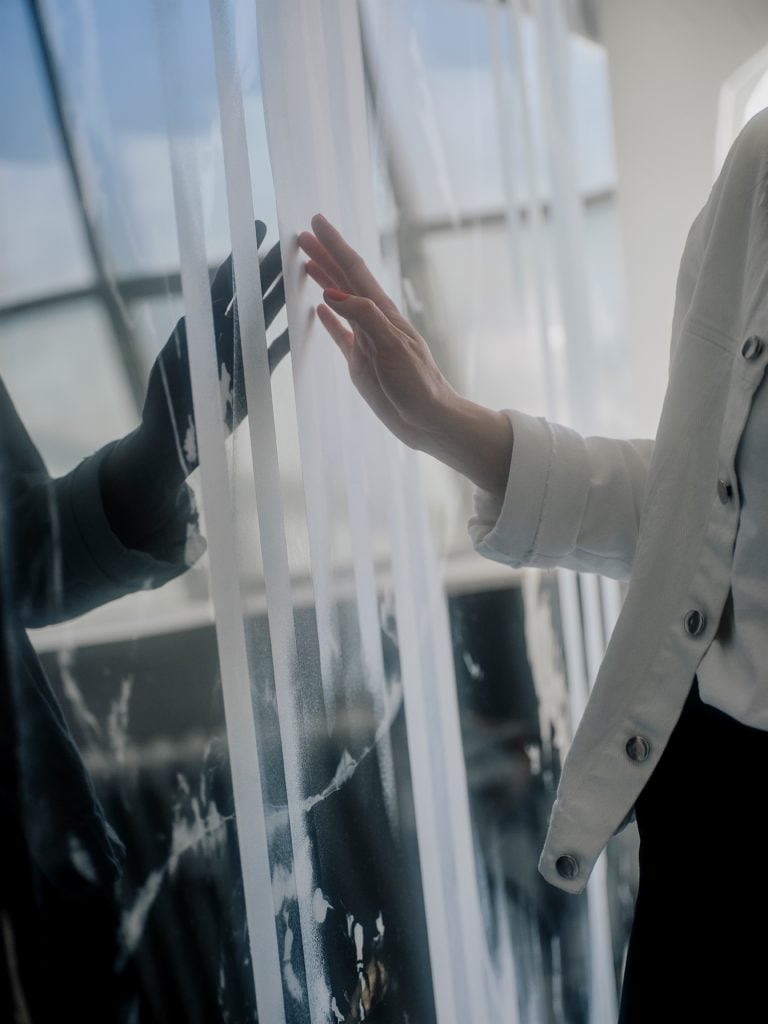
Ruscha Voormann © Sandra Singh
Do you feel that today’s socio-political environment influences your work?
Living in a democracy, being able to travel, having access to education, being allowed to exchange ideas freely, and living in a city where there is cultural diversity naturally has a huge impact on me and my work. Fortunately, art has a high priority in our society, even if current events are worrying and show us how fragile this state is.
Not only as an artist but also as a citizen, the world situation naturally affects and influences me and subconsciously flows into the decisions I make artistically, as they are directly related to my mood. An example of this is my exhibition “Polar,” which I showed at Crone Berlin at the end of 2023. The title deals with polarity and the field of tension that exists between two poles. For me, balancing extremes has long been a theme that concerned me in my life and I was happy that I could approach it in a subtle, abstract, and philosophical way. A socio-political phenomenon occupied me and I was able to express it, but my expression remained artistic.
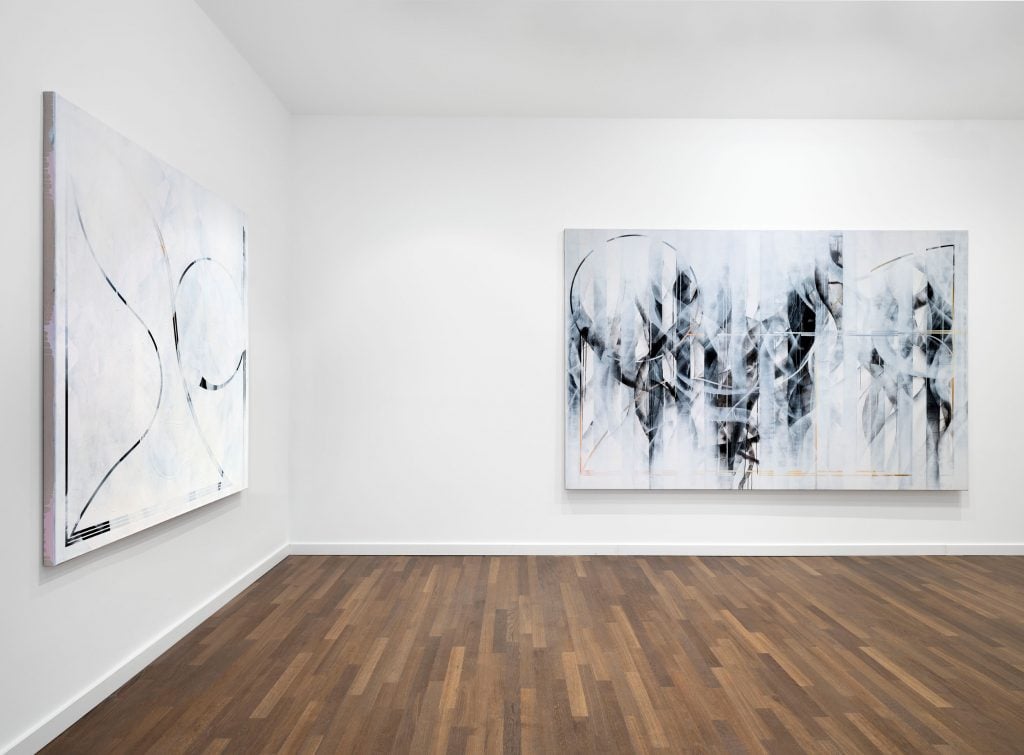
Galerie Crone “Polar” Installation view. Uwe Walter
Do artists have a responsibility towards society at large—to mirror the zeitgeist and speak out against inequalities?
Here I would make a distinction between the artist and the work. I think it is important to protect the freedom of works of art to emerge, develop, and exist for their own sake. But artists should still be aware of their visibility and their ability to create access and awareness and build new horizons from which their fellow human beings could think and act differently. I think that as an artist you should know what is going on in the world, what ground you are standing on, and what position you are taking on it. But if the means of expression of an artist do not contain clear political or social statements, he or she should not force himself or herself to integrate them. The current zeitgeist can also be reflected within art and its own laws.
If you could change one thing about the art world, what would it be?
My own work is already an attempt to change it more into what I want it to be.
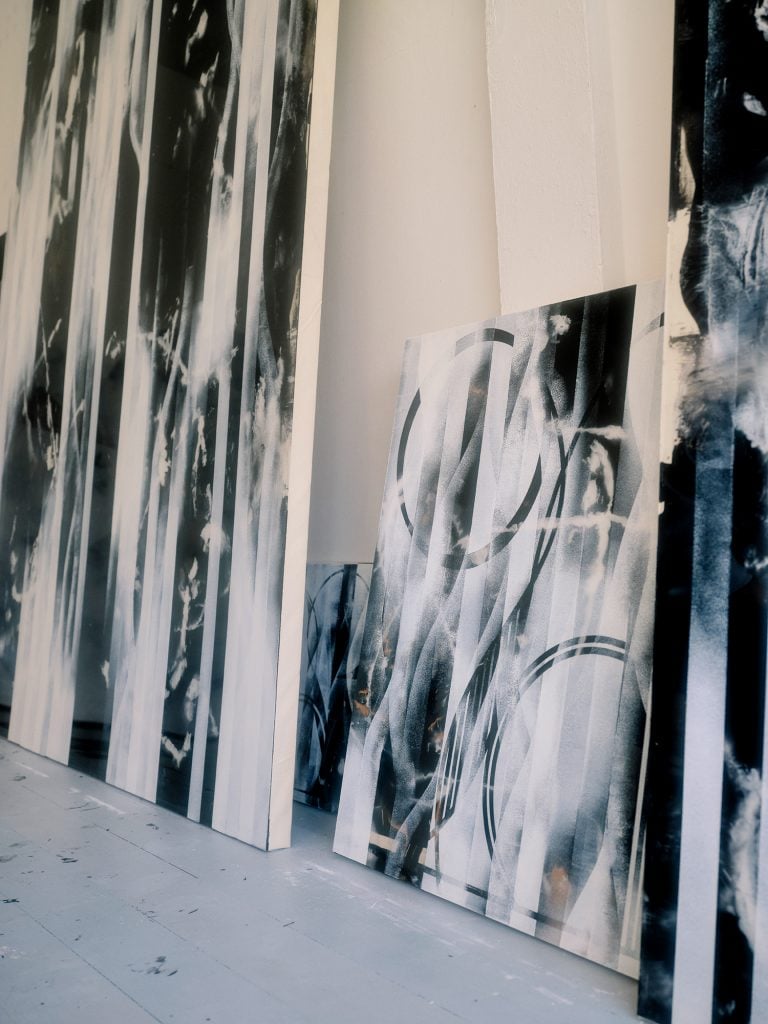
View of Ruscha Voormann’s works © Sandra Singh
How would you define success as an artist?
First of all, recognition from other artists and colleagues is of great importance. It is important to find your place in the community and to have your work shown and seen by many eyes. But I believe personal, artistic success only reveals itself over time. If an artist manages to maintain such a close relationship with his work over a long period of time that it survives the ups and downs of the art world and its trials, I suspect that is the most significant and greatest success.
If you could have dinner with any three artists, living or dead, who would you choose?
A “double date” with my husband, Milen Till, Lee Krasner and Jackson Pollock. I would like Daniel Spoerri as the chef.
What do you have planned for 2025?
Since I’m about to graduate in February 2026, I’m already focusing on my artwork for this. I don’t want to underestimate the preparations for it. I’m also currently preparing and planning my next solo show at Crone, my German and Austrian gallery. The last one was in their Berlin venue, the next one takes place in their Vienna space in 2026. I’m working intensively on the topic of solarity and the ambivalence of our relationship with the sun. This topic will be the basis of my next major exhibition. After “Polar” comes “Solar”—that’s obvious, isn’t it?
Source Credit: Content and images from Artnet News. Read the original article - https://news.artnet.com/art-world/ruscha-voormann-2591773

